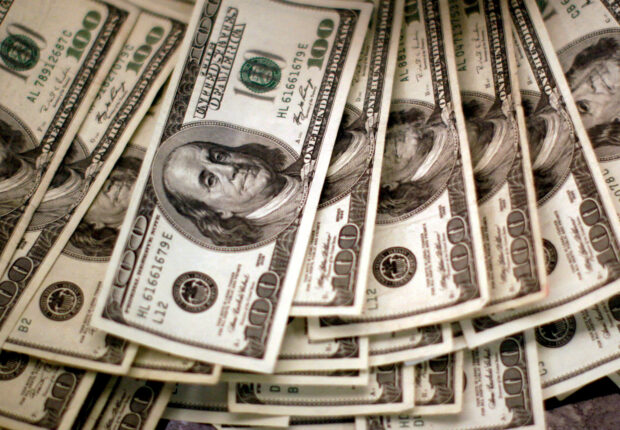Dollar heads for strongest week since July, yen on back foot

Four thousand U.S. dollars are counted out by a banker counting currency at a bank in Westminster, Colorado Nov 3, 2009. REUTERS/Rick Wilking/File photo
SINGAPORE -The dollar was steady on Friday, heading for its strongest weekly performance since July on scaled back expectations of steep and early interest rate cuts this year ahead of closely watched U.S. payrolls data later in the day.
The U.S. currency’s strong start has cast a shadow on the Japanese yen, with the Asian currency down 2.5 percent against the dollar in the first week of the year, its weakest weekly performance since August 2022.
The dollar‘s rebound will be tested by the nonfarm payrolls report due later in the session. Economists polled by Reuters forecast that 170,000 jobs were created in December, fewer than the 199,000 in November.
“Market probably got ahead of itself late last year in terms of pricing the soft landing,” said Moh Siong Sim, currency strategist at Bank of Singapore, referring to 160 basis points of cuts this year priced in by markets at the end of 2023.
Fed officials in December predicted 75 bps of rate cuts in 2024, driving money-market bets for around double that amount, with market optimism spurring a year-end blistering rally in stocks and bonds.
READ: Dollar rebounds as traders rethink Fed rate cut expectations
But since the start of the year, markets have dialed back their expectations. Traders are now pricing in less than 140 basis points of cuts this year, with the chance of a cut in March at 65 percent versus 86 percent a week earlier, CME FedWatch tool showed.
Sim said the data this week has shown that the U.S. labor market seems to be holding up and “perhaps the Fed will still need to stress the message of keeping the rates a bit longer than what the market has already priced in.”
“But we’ll see, because tonight’s payroll data will be a key data to watch.”
U.S. private employers hired more workers than expected in December, data showed on Thursday, pointing to persistent strength in the labor market that should continue to sustain the economy.
That helped the dollar shrug off weakness and against a basket of currencies, the U.S. currency was last at 102.51 on Friday. The dollar index is up 1.1 percent for the week, its strongest performance since the week ending July 23.
READ: US job openings fell slightly in November
Hamish Pepper, fixed income and currency strategist at Harbour Asset Management, said the dollar is likely to be supported by an increase in U.S. rates, relative to the rest of the world, as “Fed rate cut expectations prove too aggressive.”
“While core PCE inflation has dropped quickly to around 3 percent, this is not the 2 percent that the Fed targets and the last mile may require policy rates to stay at more elevated levels for longer than anticipated.”
Inflation, as measured by the personal consumption expenditures price index, rose 2.6 percent in the 12 months through November.
The 10-year Treasury yield broke through the psychological 4 percent mark and was last at 4.002 percent in Asian hours, up 14 basis points over the week.
The yen, which is highly sensitive to U.S. yields, weakened 0.04 percent to 144.70 per dollar on Friday after touching a more than three-week low of 144.955 earlier in the session.
READ: BOJ’s Ueda keeps wage hike hopes, quake dampens bet of Jan policy shift
Investors have tempered their expectations of the Bank of Japan exiting its ultra-loose monetary policy in the near term, with concerns over the earthquake that hit western Japan earlier this week casting further doubts on a policy shift.
In other currencies, the euro was down 0.08 percent to $1.0934, on track for 0.9 percent decline in the week, snapping a run of three weeks of gains. Sterling was little changed at $1.2677, but still on course for a small decline for the week.
The Australian and New Zealand dollars were headed for their first weekly drop in a month, with the Aussie at $0.67035, while the kiwi last bought $0.62305.